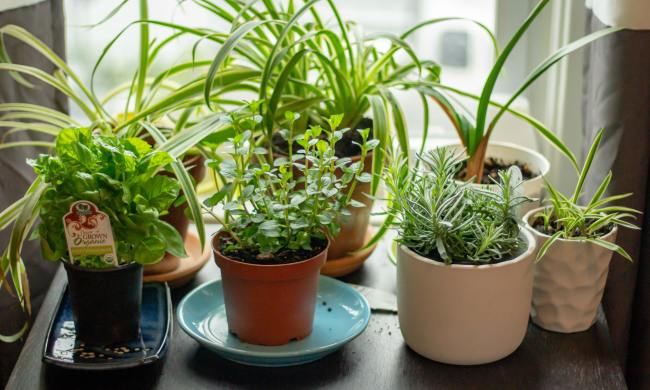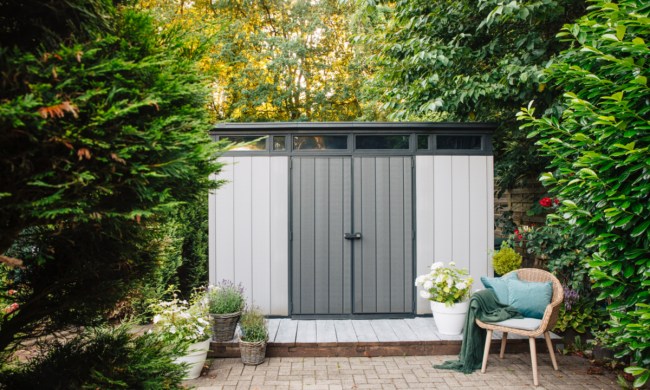If you’ve ever wondered what a sensory garden is and how to make one, you’re in luck! It’s all about creating a space that engages all the body’s senses. A proper sensory garden ought to attract your sense of smell, sight, taste, and touch. When you build a sensory mindfulness garden, you have a fantastic opportunity to connect with nature and become more aware of your physical surroundings than ever before.
Many who have built mindful spaces say benefits include reduced stress, increased sense of well-being, and a calmer mind. If you’re ready to learn how to build your own sensory mindfulness garden, let’s begin.

Know what a sensory garden is
Before you can build a sensory garden, you need to know what one is. We gave a bit of a definition above, but let’s clarify further. A sensory garden is a natural space (most often a garden of some sort) designed to engage all your physical senses. You can take an existing flower, botanical, rock/Zen garden, or garden maze and use it to create an outstanding sensory experience in many cases.
Your goal is to make your sensory garden an immersive encounter with nature.
Decide on a theme and layout
As suggested, you can use a previously designed garden layout to create your mindfulness sensory garden. Of course, you can plan it and lay it out from scratch, too, if you want. When planning the theme, most sensory gardens have two things in common. Either they are designed to create a consistent, multi-sensory experience, or they’re made to occupy individual senses at different times of the day or in other locations of the garden itself.
For instance, your garden could have different sensory “zones.” One might engage your sense of sight, while another could be filled with a delightful array of flowering plants that have sweet aromas.
Suppose it’s the multi-sensory experience you’re going for. In that case, you could create an area with plants that have a variety of shapes, textures, sizes, and colors. If there are flowers, you could ensure there are many different colors that complement and contrast. For example, you might include tulips, purple coneflower, alliums, or pelargoniums.
If you don’t have much space, you could use your urban patio or balcony to create a small sensory garden filled with container plants.
Create with imagination
Sensory gardens depend a great deal on their creator’s preferences and personality. Because of that, no two sensory gardens will likely ever be the same. So, here are some elements you can add to spice up gardens that already exist or that you’d like to create.
Place scented plants at the point of entry
Imagine being greeted by a scent you love the moment you enter your garden. How delightful! You can easily place an aromatic flowering plant at the beginning of a trail, out on your terrace, or just inside a doorway. A few plants you may want to consider are catmint or lavender. Both plants almost immediately create a sense of wellness, calm, and relaxation when people smell them.
Put a water feature somewhere in your garden
When some people hear “water feature,” they immediately have a negative reaction. How much will it cost? Is there a lot of construction involved? Will it require much maintenance? However, these concerns are easily overcome. The fact is that water features don’t have to be super expensive. While many do require a modicum of construction (think about gardens with Koi ponds or fountains, for example), you could just as easily include a large ceramic bowl filled with water.
Regardless of the size or type of water feature you decide on, remember that sunlight reflects off the surface. The water is cool to the touch. If the water is moving, it will create tinkling or small gurgling sounds. Birds and other small animals might take baths in it. Think of all the senses that might be engaged by that water feature alone!
Try planting herbs you can taste
In keeping with engaging all the senses, plant various herbs you can pick and taste. By way of example, some people plant specific sections in their sensory gardens filled with herbs like spearmint, rosemary, thyme, basil, and chives. Not only can you break off a few leaves and chew them as you meander through your garden, but you can also come back and collect whatever you need to season your evening’s dinner!

Be mindful in your garden
One of the purposes of a sensory garden is not just to engage your senses. Many people build a sensory garden to encourage mindfulness. The very act of taking care of plants and maintaining the garden can be a form of meditation. A sense of well-being, calmness, and a connection to earth can help foster a healthy mind.
Alternatively, just sitting in your garden while allowing the sun to shine down and the breeze to caress your skin can be transformative. So, take a deep breath and tune in to your surroundings. You’ll be glad you did.


